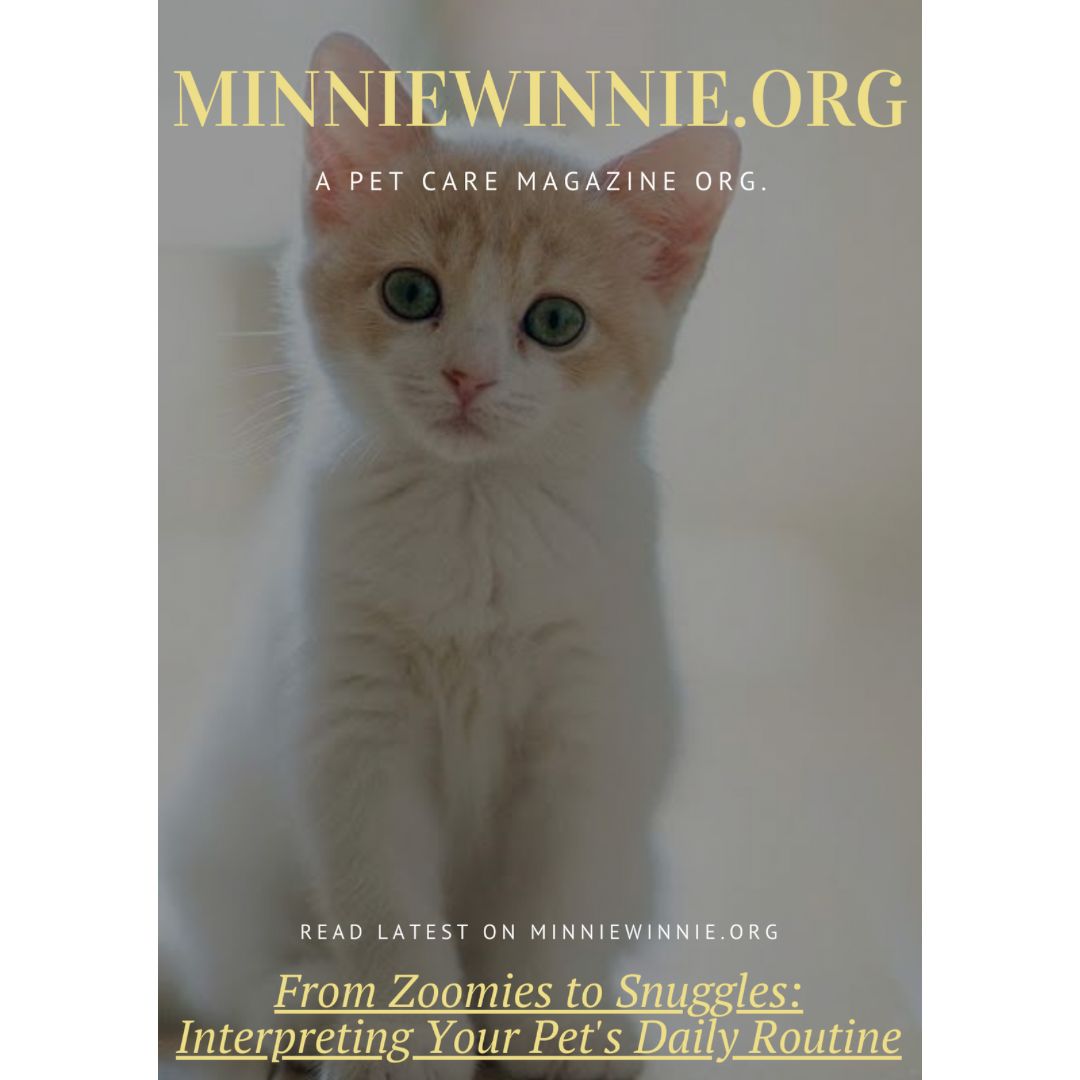From Zoomies to Snuggles: Interpreting Your Pet’s Daily Routine
Pets, much like humans, have daily routines filled with various activities that communicate their needs, feelings, and well-being. Understanding these behaviors can help pet owners provide better care and strengthen the bond with their furry friends. From the exuberant bursts of energy known as zoomies to the quiet moments of snuggling, each behavior has its own significance. Let’s dive into the fascinating world of pet behavior and decode what our pets are trying to tell us through their daily routines.
Morning Energy Bursts: The Zoomies
The day often starts with a phenomenon familiar to many pet owners: the zoomies. Scientifically referred to as Frenetic Random Activity Periods (FRAPs), zoomies are sudden bursts of energy that cause pets, particularly dogs and cats, to run around wildly for short periods. These episodes are perfectly normal and usually occur when pets are feeling particularly exuberant or when they need to release pent-up energy.
Zoomies can happen at any time but are commonly seen in the morning or after a bath. For dogs, it might involve sprinting around the yard or the house, often in circles. Cats might dash up and down the hallway, leap onto furniture, or even climb curtains. These playful antics are a sign of good health and happiness. Ensuring your pet has enough physical and mental stimulation throughout the day can help manage their energy levels and keep them engaged.
Midday Naps: Rest and Recharge
After a bout of zoomies, pets often settle down for a nap. Napping is a crucial part of a pet’s daily routine, allowing them to rest and recharge. Dogs and cats can sleep anywhere from 12 to 16 hours a day, depending on their age, breed, and activity level. Puppies and kittens, as well as senior pets, tend to need more sleep.
Observing your pet’s napping habits can provide insights into their health. Consistent sleep patterns are usually a sign of a healthy pet, while changes in sleep duration or quality could indicate underlying health issues. Ensure your pet has a comfortable and quiet place to rest, free from disturbances, to support their need for sleep.
Playtime: Mental and Physical Stimulation
Pets thrive on playtime, which serves as both physical exercise and mental stimulation. Interactive play, such as fetch for dogs or laser pointer games for cats, helps maintain their physical health and sharpens their cognitive abilities. It’s also an excellent way for pets to bond with their owners.
Each pet has its own play preferences. Dogs might enjoy tug-of-war, hide and seek, or puzzle toys that dispense treats. Cats often prefer pouncing games, batting at feather toys, or exploring cat trees. Regular play sessions can prevent behavioral problems stemming from boredom and ensure a well-rounded, happy pet.
Social Interactions: Bonding and Communication
Social interaction is vital for pets. Dogs, being pack animals, thrive on companionship and often seek out interactions with their human family members and other dogs. Regular walks, visits to dog parks, and playdates with other dogs are excellent ways to fulfill their social needs.
Cats, while often more independent, also require social interaction. They might enjoy cuddling, gentle petting, or interactive play sessions with their owners. Both dogs and cats communicate through body language, vocalizations, and behavior, so paying attention to these cues can help you understand their needs and emotions.
Evening Snuggles: Winding Down
As the day winds down, many pets seek comfort and affection from their owners. Evening snuggles are a common routine for pets, providing a sense of security and strengthening the human-animal bond. For dogs, this might involve curling up next to their owner on the couch or bed. Cats might knead a soft blanket, purr contentedly, and settle down in their favorite spot.
Snuggling is more than just a comforting activity; it’s a way for pets to express their love and trust. It’s a time to relax, unwind, and enjoy the closeness of their human companions. Providing a calm and cozy environment during this time helps reinforce your pet’s sense of safety and well-being.
Conclusion: Understanding and Enhancing Your Pet’s Routine
Interpreting your pet’s daily routine, from the energetic zoomies to the peaceful snuggles, is key to understanding their needs and emotions. By observing and engaging with their behaviors, you can ensure they receive the appropriate physical exercise, mental stimulation, social interaction, and rest. Each activity in their routine is a communication, a way for them to express their joy, needs, and well-being.
Creating a structured yet flexible daily routine that includes ample time for play, rest, and bonding can lead to a happier and healthier pet. As you become more attuned to your pet’s habits and behaviors, you’ll find that these daily rituals are not just routine; they are moments of connection that enrich both your lives.










